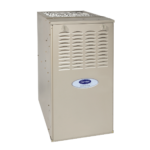 Yes, it is August and it is too hot to go outside or do much of anything else except visit your pool, or your neighbor’s pool or the HOA pool or the lake or the beach. While you’re chilling out, even if it’s only inside the house with the HVAC cranked down, spend some quality time thinking about getting ready for the winter ahead by scheduling a maintenance appointment for your furnace.
Yes, it is August and it is too hot to go outside or do much of anything else except visit your pool, or your neighbor’s pool or the HOA pool or the lake or the beach. While you’re chilling out, even if it’s only inside the house with the HVAC cranked down, spend some quality time thinking about getting ready for the winter ahead by scheduling a maintenance appointment for your furnace.
In Southern California with our mild winters, many of us barely give our natural gas furnaces or heaters a thought. We typically only run them from late October until mid-February There’s only one problem, your poor neglected heater is sitting all alone in the attic, utility closet or garage while the air conditioner unit is having all the fun as temperatures hit the mid to high 90s or even the low 100s in Southern California.
We can assure you the temperature is going to fall: So please don’t take your natural gas furnace or heating system for granted by failing to give it some love. The temperatures start to drop by late October to mid-November in Southern California. A 30-minute visit to inspect your heater by a qualified HVAC technician in late September or early October will make sure you’re cozy in late fall through winter.
 How often should you service a natural gas heater? Major HVAC manufacturers, such as Carrier and others, provide a service guide and schedule. Be sure to read the guide so you don’t neglect maintenance that is required by the unit’s warranty. After the warranty period, professional HVAC service companies often recommend bi-annual maintenance at a minimum. The trouble with bi-annual maintenance is keeping track of the bi-annual cycle. If you miss a cycle this year, then you might go three or four years between tune-ups and affect the efficiency (cost) or lifecycle of the unit.
How often should you service a natural gas heater? Major HVAC manufacturers, such as Carrier and others, provide a service guide and schedule. Be sure to read the guide so you don’t neglect maintenance that is required by the unit’s warranty. After the warranty period, professional HVAC service companies often recommend bi-annual maintenance at a minimum. The trouble with bi-annual maintenance is keeping track of the bi-annual cycle. If you miss a cycle this year, then you might go three or four years between tune-ups and affect the efficiency (cost) or lifecycle of the unit.
At Helfrich Associates, we run into a lot of neglected HVAC units during expansion, remodeling or construction damage projects. Based on our long experience, we recommend maintaining your heating sy stem every year to keep it running efficiently and trouble-free. Most manufacturers also recommend changing out the filters every two to three months, especially if you live in a humid coastal (think molds) or drier inland areas where dust is a problem.
stem every year to keep it running efficiently and trouble-free. Most manufacturers also recommend changing out the filters every two to three months, especially if you live in a humid coastal (think molds) or drier inland areas where dust is a problem.
A typical maintenance inspection and service call by a qualified HVAC professional should include: checking the thermostat to make sure it is operational, inspecting the wiring connections, cleaning the furnace blower fan, inspecting duct runs for leaks (primarily at joints), cleaning ducts and vents, and replacing the filters. Checking the venting is important to make sure there is no carbon monoxide (CO) leakage, which can cause death in high concentrations.
Nearly all new construction and home resales require one or more CO detectors to be installed and operational in the home. CO detectors do a fine job, but these sensors are just like smoke detectors and subject to environmental contamination that over time can make them ineffective. If you own an older home, we urge you to install CO and fire detectors for your own safety. These devices have saved lives and in California are required if you sell your home.
According to furnace manufacturers, you can expect your system to function for 15 to 20 years. With frequent scheduled maintenance, your system can last even longer. Many times there are other benefits too. Today’s modern new systems are highly intelligent and typically integrated with the air conditioning system and placed in the attic. With the high replacement cost of these systems, extending their life is always in your best financial interest as a homeowner.
 Most homeowners eventually sell and unless it is a cash buyer there is a required home inspection in California. We have run into situations where the age and health of the HVAC system (including the heater) are identified as suspect during professional home inspections (even if you say you never run it). Buyers know the high cost of replacing an older, poorly maintained system and this can affect the selling price that they are willing to pay for a property.
Most homeowners eventually sell and unless it is a cash buyer there is a required home inspection in California. We have run into situations where the age and health of the HVAC system (including the heater) are identified as suspect during professional home inspections (even if you say you never run it). Buyers know the high cost of replacing an older, poorly maintained system and this can affect the selling price that they are willing to pay for a property.
One last thought: Sending a technician up into the attic once or twice a year to check these hardworking systems can have other benefits too, such as identifying roof or plumbing leaks before they become a problem. A technician also will alert you to the signs of pests, such as mice or termites. Rain in the attic can over time cause rot or mold if not detected down below. Catching leaks or pest and correcting these issues early will save you a lot of money in the long run.
